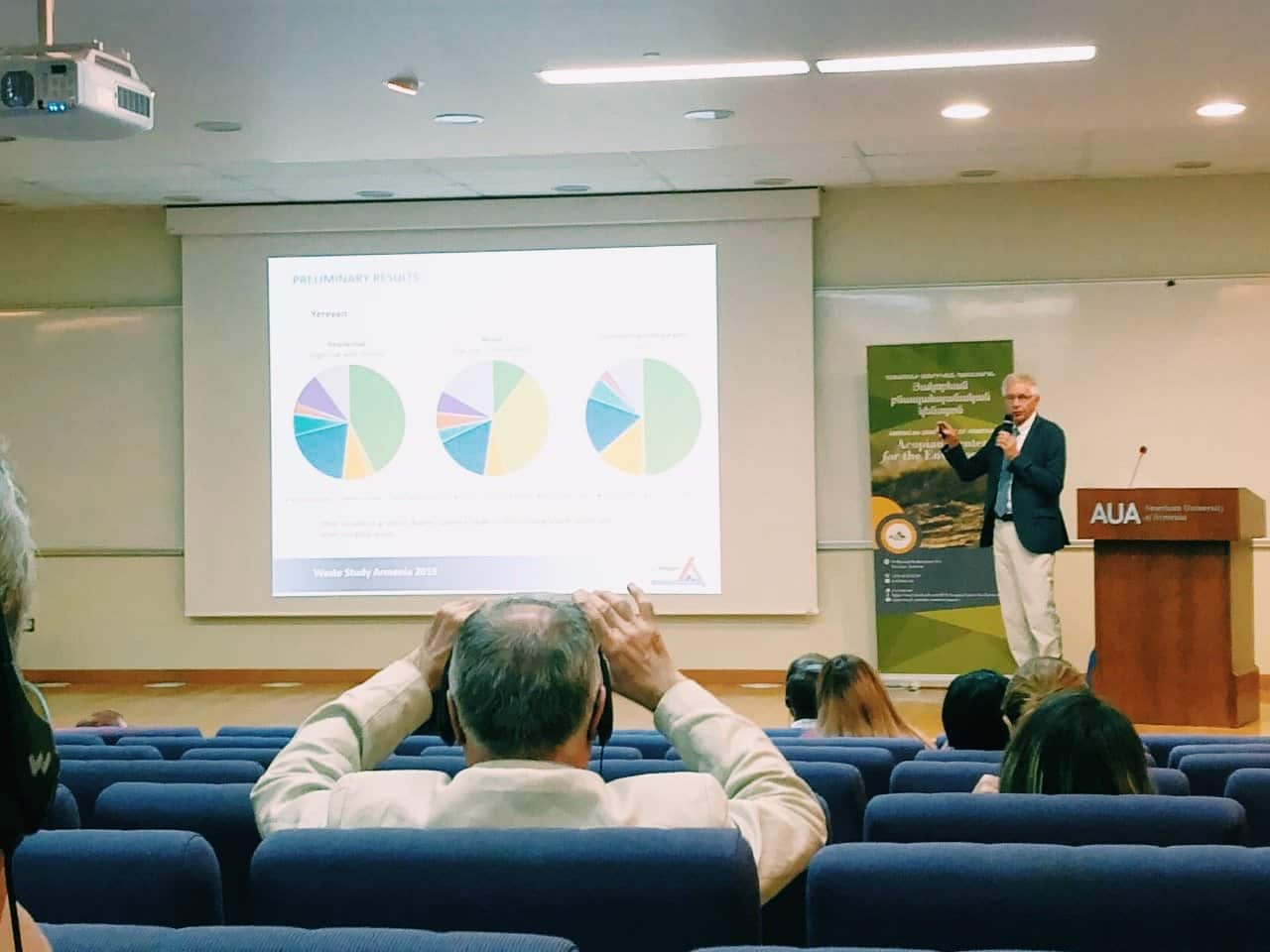On September 2nd and 6th, the AUA Acopian Center hosted two events on regular and hazardous waste management. Since November 2018, the center has launched a project on Waste Management within the Swedish Armenian SDG Expert Exchange Program to study the quantity and composition of waste by region and community type.
The first event held on Monday, September 2nd, focused on various topics including: explaining the definition of hazardous waste, its impact on public and environmental health in short and long term, and the methods of hazardous waste collection and treatment in Armenia and other countries. Government agencies also presented on the status of hazardous waste management in Armenia, followed by discussions of possible solutions by the participants.
The second event held on Friday, September 6th, included a presentation of a forecast report on waste management in Armenia and sustainable management practices. The report discussed the scope of the project, collection methods and its challenges. At the end of this event, observations and recommendations were given by the Swedish experts, followed by the audience discussions.
The Swedish experts discussed collection of different categories of waste in various regions, transportation to landfills, and methods of separation of glass, plastic, compostable, gardening, and metal material and more.
Unfortunately, there is little to no data or statistics available on waste management in Armenia. The available data has not been categorized or recorded properly and this presents a big challenge for those working in this field. Therefore, we are grateful for the endeavors and expertise of the AUA and the Swedish experts whose knowledge will facilitate our advancement in this field.
Just a few of the interesting observations made during the events are:
- Plastic bottles such as water bottles, made in Armenia, are made of thick and hard to crush material. Consequently, they occupy a lot of space and cause the bins to fill faster and that results in people leaving their waste beside and around the bin which makes for an unsightly scene in our city.
- The garbage that does make it into the bins can weight a lot. The bins then get so heavy, that they break in the process of being emptied. According to various reports, there is gardening waste mixed in the household garbage. This addition to the regular food waste, will make the garbage and consequently the bins heavier than the weight they are designed for and more prone to breaking.
- There are no specially assigned bins for restaurants and supermarkets. This means that they use the public bins for their waste which results in the bins filling quickly and once again leaves us with the garbage placed beside and around the bins.
Sadly, if we do not care about what we put in our garbage bins, the extra, gardening or recyclable material, make the garbage bins fuller, and heavier than what they are designed to handle. Some of the main takeaways from the events are that there are small steps that everyone can take, with little effort but significant impact on the environment and the industry. Here are a few:
- Pay extra attention to the space your waste is occupying when you place it in the public bins. Egg packages and bottles are bulky. Squeeze them!
- Waste from construction sites should not be placed in the public bins. Not only does it take a lot of space, it also makes the bins heavier than they should be.
- Hazardous and toxic materials should be separated. They are dangerous and can cause serious illness.
- You can compost your food waste. It makes for great food for your plants and garden
The bottom line is, it matters what you do with your waste, where you put it, and how you dispose of it. Every bottle, every can, every broken bin, doesn’t just make our cities look bad and cause disease, it says something about you!

